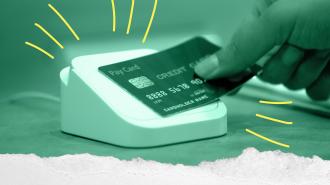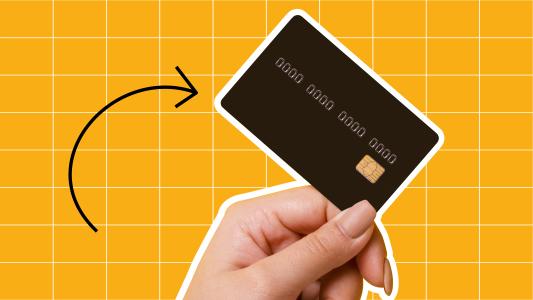When you think of credit, odds are you imagine tapping your credit card to buy something at a store, knowing you’ll be on the hook to pay for it in the future.
But there are many forms of credit, and the history of this financial arrangement predates our plastic cards by thousands of years. Over time, credit has evolved into an indispensable and powerful financial tool for individuals and businesses alike. That power comes with risks, however.
So let’s take a closer look at the concept of credit, its history, applications, and how to use it correctly.
Watch the full episode on building good credit:
The evolution of credit
The concept of credit — essentially, using other people’s money instead of your own — is nearly as old as human civilization itself.
In ancient Mesopotamia 5,000 years ago, farmers and merchants relied on credit systems to facilitate trade and finance crop production. You could add beer drinking to the list, too, as economist Michael Hudson wrote in a 2008 paper:
“Because of the time gap between planting and harvesting, few payments were made at the time of purchase. When Babylonians went to the local alehouse, they did not pay by carrying grain around in their pockets. They ran up a tab to be settled at harvest time on the threshing floor.”
As civilizations advanced and economies grew more complex, credit evolved alongside them. In ancient Rome, for example, people used a system of credit called “nexum,” which involved pledging land or other assets as collateral for loans. This practice was an early form of so-called secured lending that laid the groundwork for modern credit systems.
In the Middle Ages, merchants and traders relied on credit instruments called bills of exchange to facilitate long-distance trade. These instruments allowed merchants to buy goods on credit and settle their debts later, fostering the growth of trade and commerce.
The modern concept of credit emerged in the late 19th and early 20th centuries with the rise of consumer culture and the development of new financial instruments like installment loans and credit cards. The world’s first widely used credit card, Diners Club, was introduced in 1950, allowing cardholders to make purchases at participating establishments and pay their bills later. This innovation revolutionized consumer spending and marked the beginning of the modern credit era.
What can I use credit for?
Having good credit is important, especially if you live in the United States. If you want to secure a personal loan or make a large purchase for which you don’t have cash on hand, you’ll need a history of credit and a good credit score. (Some employers even check a variation of your credit history before making a hiring decision.)
Credit comes in several main forms. The type of credit you’ve probably been imagining this whole time is consumer credit. This is the type that you as an individual are most likely to interact with on a daily basis. You use it when you buy something with a credit card, for example.
Why are lenders willing to let you use their money? In short: They get fees and interest rates. If you fail to pay back the money on time, you may end up having to pay lenders far more than you originally borrowed.
Consumer credit is also used to make uncollateralized loans — that means without any backing — for various purchases, with the understanding that the loans will be paid back either in installments as part of a revolving credit line. Used responsibly, this can be used to make various purchases that are paid off later. For people with cash flow issues — as in, they don’t have cash now but they know they’ll be able to access money soon — this can be very useful.
Other common types and uses of credit include:
Buying a home: Mortgage loans allow individuals to buy a house or other real estate property by borrowing a large sum of money and repaying it over an extended period, typically 15 to 30 years. The property itself serves as collateral for the loan, ensuring the lender can recover their funds if the borrower defaults on the loan.
Financing higher education: Student loans enable individuals to pursue higher education by covering the cost of tuition, books, and living expenses. These loans are typically repaid over an extended period after the borrower has completed their education and started earning an income.
Purchasing a vehicle: Auto loans provide financing for individuals to buy a car, truck, or other vehicles. Like mortgage loans, auto loans are secured by the vehicle being purchased, which serves as collateral for the loan.
Accessing revolving credit: Credit cards offer a convenient form of revolving credit that allows cardholders to make purchases up to a predetermined credit limit and repay their balances over time or in full each month.
Obtaining personal loans: Unsecured personal loans can be used for various purposes, such as consolidating high-interest debt, financing home improvements, or covering emergency expenses.
How to use credit wisely
Credit, when used responsibly, can be a powerful financial tool that provides flexibility and access to essential goods and services. But as money management expert Joe Saul-Sehy notes, “credit is a paradox” because we need it for certain purchases, like a car or a home, but we should generally try to avoid using it.
To ensure that you use credit wisely and responsibly, consider the following tips:
Borrow only what you can afford to repay: Before taking on any form of credit, carefully evaluate your financial situation and ensure that you can comfortably afford the monthly payments. Overextending yourself can lead to financial stress and potential default, which can harm your credit score and future borrowing ability.
For credit cards, Saul-Sehy offers a simple tip: “Do not use the credit card if you don’t know where the money is going to come from to pay it.”
Pay your bills on time: Timely payments are crucial to maintaining a good credit score. Late or missed payments can result in fees, higher interest rates, and a negative impact on your credit report. Consider setting up automatic payments or reminders to help you stay on top of your bills.
Monitor your credit utilization: Credit utilization refers to the percentage of your available credit that you’re currently using. A high utilization rate can negatively impact your credit score, so it’s essential to keep your balances low relative to your credit limits. Aim to keep your credit utilization below 30% for optimal credit health. For example, if you have a credit card with a $5,000 limit and you currently have a balance of $1,250, your credit utilization is 25%—comfortably below the recommended 30%!
Build a diverse credit mix: Having a mix of different credit types, such as installment loans (mortgages, auto loans, student loans) and revolving credit (credit cards), can positively affect your credit score. Lenders like to see that you can responsibly manage various forms of credit.
Monitor your credit report: Regularly review your credit report to ensure that all information is accurate and up-to-date. If you notice any errors or discrepancies, report them to the credit bureaus immediately. Monitoring your credit report can also help you spot potential signs of identity theft or fraud.
Maintain a long credit history: Length of credit history is another factor that affects your credit score. Keeping your oldest credit accounts open and in good standing can help you build a longer, more positive credit history.
Understanding the concept of credit, its history, and its various applications is essential for navigating today’s complex financial landscape. By using credit responsibly and following best practices, you can harness its power to achieve your financial goals and build a strong financial foundation. Remember that credit is a tool that, when used poorly, can create long-term financial setbacks and headaches. But used wisely, credit can be a tool that unlocks opportunities and improves your overall quality of life.






